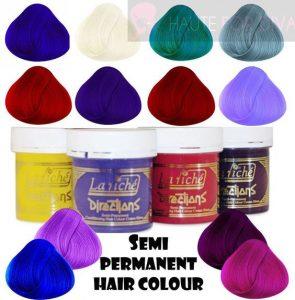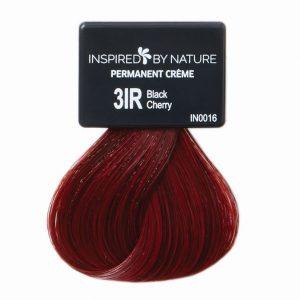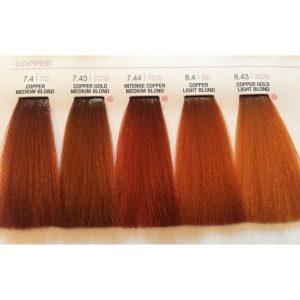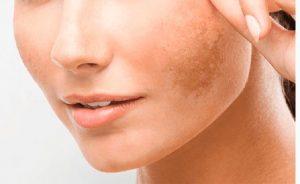How long should I wait before coloring my hair?
How long should I wait before coloring my hair? Coloring your original hair color is a fun way to change your appearance. It’s also an affordable option if you’re looking to change your look without spending a lot of money. However, there are a few things you need to consider before you start coloring your hair.
There are two main types of hair color – permanent and semi-permanent. Permanent hair colors last longer than semi-permanent ones, but they require a professional to apply. Semi-permanent hair colors are easier to use at home, but they won’t last as long as permanent hair colors.
If you want to color your hair, you’ll need to decide between these two options. The length of time it takes to get your hair colored depends on the type of hair color trends you choose.
How long should I wait before coloring my hair?
Semi-Permanent Hair Colors

Semi-permanent hair color will usually take about three weeks for your natural hair to grow out after being dyed. This means that you can wash your hair up until then. You may have to wear protective headgear while washing your hair because some dyes contain chemicals that could irritate your scalp or cause skin irritation.
You don’t have to worry too much about how often you shampoo your hair when using this kind of dye. Shampooing every day isn’t necessary with semi-permanent hair colors. If you do shampoo more frequently than usual, be sure not to scrub your scalp excessively. Scrubbing your scalp hard enough to remove dead cells from your follicles could damage them.
The best thing about semi-permanent hair dyes is that they come in many different shades so you can easily match your new shade to any existing hair color. They also tend to fade over time, which makes them ideal for people who like experimenting with their looks.
However, semi-permanent hair colors aren’t suitable for everyone. People with naturally curly hair shouldn’t use semi-permanent hair color because it tends to make curls frizzy and unmanageable. Also, those with thinning hair might find that semi-permanent hair dye doesn’t provide enough coverage.
Permanent Hair Color

Unlike semi-permanent hair coloring, permanent hair colors stay put even after several washes. Because of this, you won’t need to keep wearing protective headgear during the process. In addition, most permanent hair colors offer greater protection against sun exposure and other environmental factors.
Because of all these benefits, permanent colors are better suited for people whose hair has been damaged by chemical treatments such as bleaching or perming. These kinds of treatments weaken the bonds holding strands together, making it difficult for dry hair to retain its shape. As a result, hair becomes weak and brittle.
When choosing a permanent hair color, think carefully about what you’d like to achieve. For example, if you just want to add highlights to your current hair color, try one of the lighter tones first. Darker hues work well for adding depth to dark browns and black hair.
Some permanent hair colors include ingredients designed to protect your natural hair color cuticle from heat damage caused by blow-drying or curling irons. Others help prevent split ends. Some hair color products also condition your hair. However, there are no guarantees that these features will actually improve your hair’s health. It’s always wise to consult a dermatologist before trying anything new.
If you’re looking for something special, consider getting a custom blend created especially for you. A professional stylist can mix various pigments into an oil base to create a unique look. The end hair color product will last longer than standard formulas and will give you a great deal of control over the final appearance.
In general, though, permanent hair colors are less forgiving than semi-permanent ones. Once applied, they cannot be removed without damaging your hair. This means that once you’ve chosen a permanent hair color, you’ll probably stick with it until your hair grows out again.
If you decide on permanent hair color, start applying it immediately. You may notice some stinging at first but this usually goes away within minutes. Afterward, apply another coat every two weeks or so. Be careful not to rub the mixture onto your skin; instead, gently massage it through your hair.
If you have fine hair, don’t expect much volume when using permanent hair color. Fine hair needs more conditioning than thick hair does. To get maximum results, follow up each application with a deep treatment containing protein. Protein helps strengthen hair while keeping it flexible.
Once you’ve finished styling your hair, avoid washing it too often. Instead, let it air dry overnight. When you do wash your hair, only shampoo it thoroughly. Do not rinse it completely.
Risks of coloring hair too regularly
There are risks associated with frequent use of a professional salon service or at-home kit that may include:
- Excessive heat from blow dryers and curling irons
- Overuse of chemical products such as perms, relaxers, bleaches, etc.
- Repeated exposure to harsh chemicals in-home kits
- Irregularity of results due to inconsistent application techniques
- Damage to your natural hair texture • Loss of moisture content
- Breakage of fragile strands
- Hair loss
The best way to keep your hair healthy is to treat it right after cutting off the old growth. Use a good quality moisturizing leave-in conditioner daily. Avoid hot water washes which strip away essential oils needed to maintain strong hair. Also, make sure to brush your hair frequently to stimulate circulation and promote overall scalp wellness.
Hair Color Tips & Tricks When choosing a shade for yourself, remember that lighter shades tend to fade faster than darker hues. For example, if you choose a light brown, chances are you’ll need to go back to darken it later. On the other hand, if you opt for black, you won’t likely want to change it unless you plan to dye your entire head!
To achieve the perfect hue, try mixing different types of dyes together. For instance, add a little red to your blonde highlights to bring them out even brighter. Or, combine a few shades of blue to produce a cool effect.
To ensure lasting beauty, take care of your hair during its growing phase. Keep your hair clean and free of buildup and seal any cuts with a protective balm. And, never forget about regular trims — they’re important for maintaining proper length and preventing breakage.
We also carry an extensive line of professional salon-quality hair care products including Shampoo & Conditioner Sets, Hair Care Kits, Styling Products, Curls & Waves kits, and much more.
Does hair type (curly or straight, dry or oily, coarse or fine) affect color timing?

We also carry an extensive line of professional salon visits -quality products including Highlights & Lowlights, Lightening Shampoo, Conditioner, Hair color Spray, Styling Products, Curls & Waves, and much more. And did we mention they’ve got great prices?!
How do I fix my hair if I mess up when coloring at home?
There is no way to repair the damage done during the process of dying hair. The best thing to do is simply wash hair thoroughly and condition it well. Avoid heat styling until hair has fully recovered from dye application.
Why can’t I find a good red/brownish-orange color?
It’s hard to find an exact match because there isn’t really such a thing as an “orange” hair color. Orange tones vary so widely depending on skin tone, eye color, and hair color that it would be impossible to create one specific orange color. Instead, look for colors like goldenrod yellow, burnt sienna, brick red, rust, maroon, and taupe. These colors have similar undertones but still, offer enough variation to give you plenty of options.
What does “colorfastness” mean?
Color Fastness refers to how quickly a particular color fades once applied. It depends on several factors:
- How often do you shampoo?
- Whether you use bleach or not.
- What kind of product do you use.
- If you blowdry or flatiron your hair.
- If you apply heat styling tools.
- If you use clarifying shampoo prior to applying color.
- If you use a deep conditioning treatment.
- If you use a protein mask.
- If you use a serum.
- If you use a leave-in conditioner.
- If you use a moisturizing spray.
- If you use a volumizer.
- If you use a curl-defining cream.
- If you use a frizz control product.
- If you use a smoothing powder.
- If you use a finishing oil.
- If you use a shine-enhancing mist.
- If you use a texturizing mousse.



